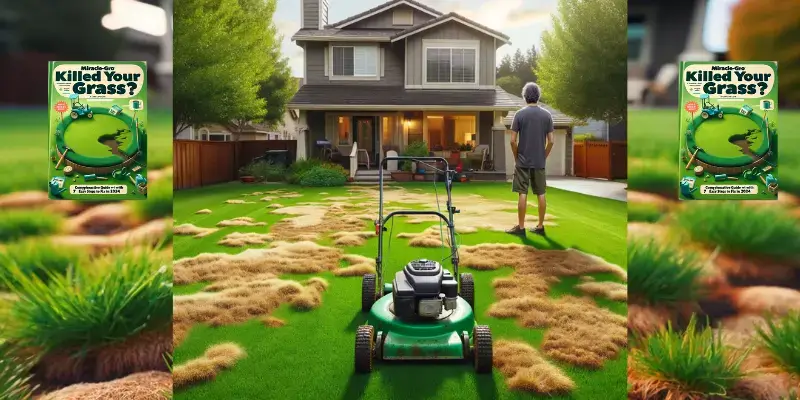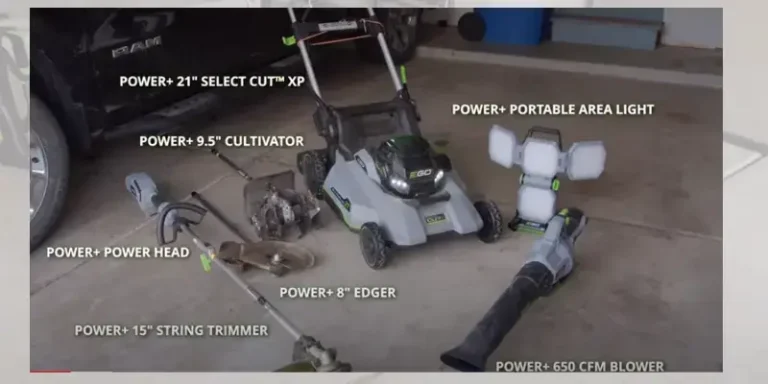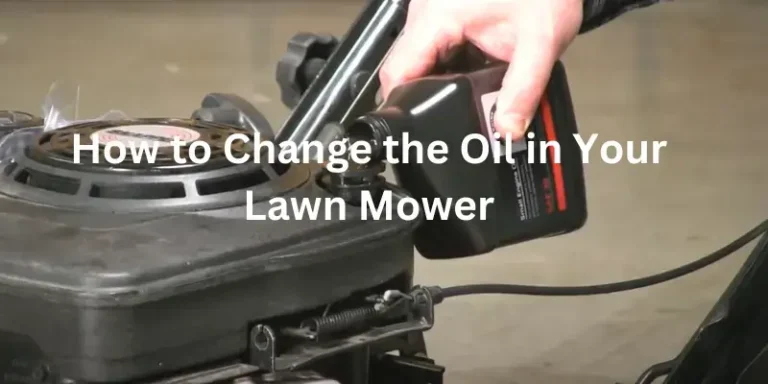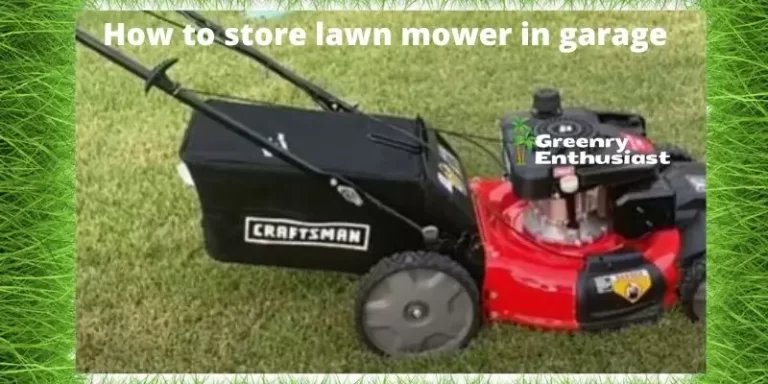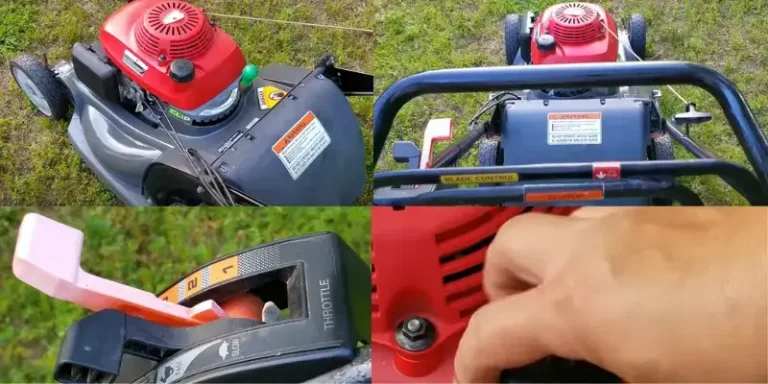Miracle-Gro Killed Your Grass? [Comprehensive Guide with 7 Easy Steps to Fix it in 2024]
I remember the day I looked out my window, expecting to see the lush, green lawn I had worked so hard to cultivate. Instead, I was greeted by patches of brown and withering grass. The last time used Miracle-Gro killed my lawn grass This scenario is all too familiar to me and many others who take pride in our lawns. Often, the reason behind this disappointment is the misuse of popular fertilizers, like this fertilizer. Designed to enrich and beautify, these fertilizers can sometimes do more harm than good, leaving us puzzled over where we went wrong.
This is why I want to share my journey of understanding the delicate balance of lawn nourishment and the potential hazards of fertilizer overuse, with a particular focus on Miracle-Gro. In this article, I’ll explore why Miracle-Gro can sometimes damage grass and, most importantly, how I learned to repair and revive a lawn suffering from fertilizer burn. As someone who has experienced the ups and downs of lawn care, I aim to provide a comprehensive guide to help you bring your lawn back to life, ensuring it becomes the lush, verdant oasis you’ve always wanted as the winter season is going to end in many regions soon.
Why Did Miracle-Gro Killed Your Grass?
I remember staring in disbelief at the brown, lifeless patches where my lush lawn once thrived. The Miracle-Gro, my go-to solution, had betrayed me. This was my harsh introduction to ‘fertilizer burn’ – a term I wish I had known earlier.
Fertilizer Burn: A Lawn’s Nightmare:
Picture this: you’re feeding your lawn a super-rich diet, packed with nutrients. Sounds great, right? Wrong. Just like us, grass can only handle so much richness. Overdoing it with a nitrogen-rich fertilizer like Miracle-Gro is like overeating junk food – it’s bound to have negative consequences.
Nitrogen: Friend or Foe?
Here’s the twist: nitrogen is essential for grass growth, but too much can be a disaster. It’s a delicate balance, and I learned it the hard way. When nitrogen overloads the soil, it can suck moisture from the grass roots, causing dehydration and a scorched-earth look.
What Expert Say
“I dug into some research to get to the bottom of this. One eye-opening study from the “Journal of Agronomic Sciences” painted a clear picture: over-fertilization disrupts the soil’s natural harmony, leading to grass damage. A gardening expert put it simply: too much nitrogen is like giving your lawn a sunburn.”
Turning Point
This was a wake-up call for me. It wasn’t just about picking a fertilizer; it was about understanding what my lawn needed. And this realization led me to a new mission: finding out how to fix the damage and get my green, vibrant lawn back.
Risks and Drawbacks: Common Repair Methods
Repairing a lawn damaged by fertilizer burn is like walking a tightrope – one wrong step and you could worsen the situation. I learned this the hard way, so I want to share the potential risks and how to avoid common pitfalls in each step of lawn repair.
Washing Away Excess Fertilizer:
Risk:
Overwatering can lead to root rot and fungal diseases.
Tip:
Water your lawn in moderation. Ensure it’s enough to dilute the fertilizer, but not so much that it leaves the soil waterlogged.
Removing Dead Grass:
Risk:
Aggressive removal can damage healthy grass and disturb soil stability.
Tip:
Gently rake out the dead grass. Aim for a balance between thorough removal and preserving the integrity of the surrounding healthy lawn.
Aerating the Lawn:
Risk:
Over-aeration can stress healthy grass and expose the soil to more weeds.
Tip:
Aerate only as needed. If the soil isn’t compacted, you might skip this step to avoid unnecessary stress on the lawn.
Adding Compost:
Risk:
Too much compost can smother the grass and imbalance nutrient levels.
Tip:
Apply a thin layer of compost. It should be enough to enrich the soil without overwhelming it.
Spreading Grass Seed:
Risk:
Using the wrong type of grass seed can lead to inconsistent growth and future lawn issues.
Tip:
Research and choose a grass seed that matches your lawn’s existing grass type and your local climate.
Raking in the Compost and Seed:
Risk:
Rough raking can disturb the newly laid seeds and unevenly distribute compost.
Tip:
Gently rake the area to ensure even coverage and proper contact between seeds and soil.
Watering the New Grass:
Risk:
Inconsistent watering can lead to patchy growth or seed washout.
Tip:
Maintain a regular watering schedule. Keep the soil consistently moist but not soggy to support seed germination and growth.
These steps with care and knowledge can make all the difference in successfully repairing your lawn.
Choosing the Right Grass Seed
After addressing the immediate effects of fertilizer burn, the next crucial step in lawn revival is reseeding. But not all grass seeds are created equal, and choosing the wrong type can lead to further disappointment. Here’s how I navigated the maze of options to find the perfect match for my lawn.
Understanding Your Lawn’s Needs:
Climate Compatibility:
The first thing I considered was my local climate. Grass types vary in their temperature preferences. For instance, cool-season grasses like Kentucky Bluegrass thrive in northern climates, while warm-season grasses like Bermuda excel in southern regions.
Soil Type Matters:
I also tested my soil to understand its composition. Some grasses do well in sandy soil, while others prefer clay. Knowing your soil type helps in selecting a grass seed that’s more likely to flourish.
Sun vs. Shade:
Sun exposure is another key factor. If your lawn basks in full sun, you’ll want a sun-tolerant variety like Zoysia. For shaded areas, a shade-tolerant grass like Fescue is a better choice.
Matching Grass Type to Lawn Conditions:
High Traffic Tolerance:
If your lawn sees a lot of foot traffic, look for a hardy variety. Ryegrass, for example, can withstand more wear and tear.
Drought Resistance:
In areas prone to dry spells, drought-resistant grasses like Buffalo grass can save a lot of water and maintenance effort.
Aesthetic Preferences:
The look and feel of the grass are also important. Some grasses offer a finer, more carpet-like texture, while others are coarser but more resilient.
Personal Experience and Research:
I spent time researching various grass types and their specific needs. Online gardening forums, local nurseries, and extension services were invaluable resources. I also talked to neighbors with admirable lawns and asked about their grass types and maintenance routines.
By carefully considering these factors, I was able to choose a grass seed that not only suited my lawn’s conditions but also aligned with my maintenance capabilities and aesthetic preferences.
Preventing Weed Invasion
Once my lawn was reseeded, my next challenge was to keep weeds at bay. Weeds can quickly overrun a recovering lawn, competing for nutrients, water, and sunlight. Here’s how I tackled this issue:
Effective Weed Prevention Strategies:
Pre-Emergent Herbicides:
These herbicides prevent weed seeds from germinating. I applied them early in the season but made sure they were compatible with my new grass seeds.
Thick Lawn Maintenance:
A thick, healthy lawn is the best defense against weeds. I ensured regular feeding, mowing, and watering to encourage dense growth, which naturally suppresses weeds.
Spot Treatment:
For the occasional weed, I used spot treatments instead of broad herbicides to minimize damage to the new grass.
Timely Maintenance and Care:
Regular Mowing:
Keeping the grass at an ideal height helped in maintaining lawn health and deterring weed growth.
Watering Schedule:
Consistent, deep watering encouraged strong root growth, which is essential for outcompeting weeds.
Observation and Quick Action:
Regularly inspecting the lawn helped me spot and address weed issues before they got out of hand.
Comparative Analysis of Slow-Release Fertilizers
Choosing the right fertilizer is crucial for long-term lawn health. I explored various slow-release fertilizers to understand which one suited my lawn best.
Types of Slow-Release Fertilizers:
Synthetic Organic:
These are processed fertilizers that release nutrients gradually. They minimize the risk of burn and provide consistent nourishment.
Pros: Predictable nutrient release, less frequent application.
Cons: More expensive, may still have higher concentrations of nutrients.
Natural Organic:
Derived from plant or animal waste, these fertilizers release nutrients as they decompose.
Pros: Improve soil health, lower risk of burn, environmentally friendly.
Cons: Slower nutrient release, nutrient levels can be inconsistent.
Coated or Encapsulated:
Nutrients are encased in a water-soluble coating, releasing them slowly.
Pros: Very controlled release, reduced leaching.
Cons: Higher cost, the coating can break if handled roughly.
Best Use Scenarios:
Newly Seeded Lawns: Natural organics are gentle and great for new lawns.
Mature Lawns: Synthetic organics or coated fertilizers work well for established lawns needing consistent feeding.
Environmentally Conscious Choices: For those looking to minimize environmental impact, natural organics are the best choice.
By understanding the pros and cons of each type, I was able to select a fertilizer that matched my lawn’s needs and my gardening ethics.
7 Steps to Repair Dead Grass Caused by Miracle-Gro
When my lawn fell victim to fertilizer burn, I followed a meticulous 7-step process to bring it back to life. Here’s how I tackled each step:
Wash Away the Miracle-Gro:
Technique:
I gently watered the affected areas to dilute the excess fertilizer. This involved a careful balance to avoid waterlogging the soil.
Frequency:
I did this over several days, monitoring the soil’s moisture level to ensure I wasn’t overdoing it.
Remove the Dead Grass:
Method:
I used a garden rake to gently remove the dead grass. This step required a light hand to avoid disturbing the soil too much.
Disposal:
I made sure to dispose of the dead grass properly, as it could contain high levels of nitrogen.
Aerate Your Lawn:
Importance:
Aerating the lawn helped to improve air, water, and nutrient flow to the roots.
Tools Used:
I used a manual aerator for small patches and rented a core aerator for larger areas.
Add Compost:
Benefits:
Compost adds essential nutrients back into the soil and improves its structure.
Application:
I spread a thin layer of compost over the lawn, making sure it wasn’t too thick to suffocate the grass.
Spread Grass Seed:
Technique:
I evenly distributed the grass seed over the lawn, focusing more on the bare patches.
Seed Selection:
Choosing the right type of seed was crucial, as discussed earlier.
Rake the Compost:
Purpose:
Lightly raking helped to mix the compost and seeds, ensuring good contact with the soil.
Gentle Approach:
I was careful not to disturb the seeds too much while raking.
Water Your New Grass:
Schedule:
I watered the lawn lightly but consistently, keeping the soil moist to aid germination.
Avoiding Overwatering:
It was important not to overwater, as this could wash away seeds or cause other issues.
Following these steps, I was able to gradually nurse my lawn back to health. Each phase required patience and attention to detail, but the results were worth it. My lawn eventually regained its vibrant green hue, becoming a testament to the effectiveness of these methods.
Additional Lawn Care Tips
Reviving my lawn from fertilizer burn was just the beginning. Maintaining its health and vibrancy required ongoing care and adapting to the changing seasons. Here are some general and seasonal lawn care tips that have worked wonders for me:
General Lawn Maintenance Tips:
Regular Feeding:
I found that feeding the lawn every six weeks during the growing season with an appropriate fertilizer keeps it robust.
Mowing Practices:
Mowing to the right height, typically between 2.5 to 3 inches, encourages deeper root growth and prevents weeds.
Sharp Mower Blades:
Keeping the mower blades sharp ensures clean cuts, which are less stressful for the grass.
Watering Routine:
Deep, infrequent watering promotes strong root systems. I aim for about an inch of water per week, including rainfall.
Overseeding:
Periodic overseeding helps to keep the lawn dense and prevents weeds.
Seasonal Lawn Care Advice:
Spring:
This is the time for vigorous growth. I aerate if needed, apply pre-emergent weed control, and start regular mowing.
Summer:
The focus is on watering and mowing. I water early in the morning to reduce evaporation and adjust the mower height to leave grass taller, which shades the soil and retains moisture.
Fall:
I prepare the lawn for winter by applying a fertilizer formulated for fall, which helps strengthen the roots. This is also the best time for overseeding.
Winter:
I keep the lawn clear of debris and limit foot traffic on frosty grass to prevent damage.
By following these tips and being attentive to the needs of my lawn throughout the year, I’ve managed to keep it healthy and resilient against common issues. Lawn care is an ongoing journey, and each lawn has its unique characteristics. But with patience and a bit of trial and error, you too can achieve a lawn that not only survives but thrives.
FREQUENTLY ASK QUESTIONS (FAQs)
What is Miracle-Gro and how does it relate to grass care?
Miracle-Gro is a popular lawn fertilizer used to nourish grass and promote growth. However, there have been concerns about its potential to harm grass when not used properly.
Can Miracle-Gro kill your grass?
Yes, using it excessively or incorrectly can lead to damage and even kill your grass. The high concentration of nutrients in Miracle-Gro can be detrimental to grass if not applied according to the instructions.
What are the signs that your grass has been harmed by Fertilizer?
Grass that has been negatively affected by fertilizer may exhibit symptoms such as browning or burning of the grass blades, stunted growth, or even complete patches of dead grass.
What’s the best way to apply this fertilizer without harming grass?
Adhering to the manufacturer’s guidelines is key. This means correct quantity, timely application, and even distribution.
What should be done if you suspect that Miracle-Gro has harmed your grass?
If you notice signs that your grass has been negatively affected by the fertilizer, it’s important to stop using the fertilizer immediately and take steps to try and mitigate the damage, such as watering the area to dilute the fertilizer and promote recovery.
What are the alternatives to Miracle-Gro for promoting a healthy lawn?
There are various lawn care products and fertilizers available that can promote the healthy growth of your grass without the risk of potential damage. Scotts and other brands offer alternatives that can help maintain a healthy lawn.
Can the use of Miracle-Gro be beneficial for the grass if used correctly?
Yes, when used in the right amount and at the appropriate time, it can provide the necessary nutrients for the grass to thrive and maintain a healthy, vibrant appearance.
Are there specific times of the year when it is best to fertilize your lawn with Miracle-Gro?
It’s important to fertilize your lawn at the right time of year to avoid any potential harm to the grass. Typically, it is recommended to fertilize in the early spring or late fall when the grass is not dormant.
How much Miracle-Gro should be used for effective lawn care?
The amount of fertilizer to be used depends on various factors such as the size of the lawn and the specific type of fertilizer being used. It’s important to carefully measure and apply the recommended amount to prevent overuse.
What should be considered before using Miracle-Gro to fertilize your lawn?
Before using this or any other type of fertilizer, it is important to understand the specific needs of your lawn, considering factors like the type of grass, soil pH, and the existing health of the grass. These considerations can help ensure that the fertilizer is used effectively without causing harm to the grass.
Conclusion
In summary, reviving a lawn affected by fertilizer burn is a blend of careful assessment, targeted action, and consistent maintenance. By understanding the root causes, cautiously navigating repair methods, and adopting a holistic approach to lawn care, you can transform a damaged lawn into a thriving green space. Embrace these strategies and watch as your lawn rebounds with renewed vigor and beauty. Share your progress and insights – your journey could be the guiding light for others striving for their ideal lawn. Here’s to the resilience and revival of your outdoor sanctuary!

About Naveed A Hashmi
In my childhood, I used to see my parents while working in the land, for these reasons today I have been serving the same as our own tradition and culture. I thus love to stay in it, because I want to learn something advanced and new so that I may improve my farm’s contour and help others with my experience.

